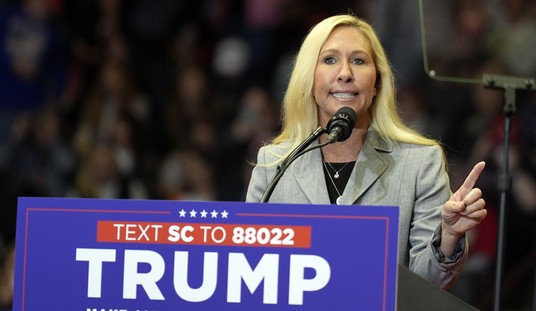
Sensitive Compartmented Information Facility. SCIF. This is the Holy of Holies in the intelligence world. This is where information is kept that is literally above Top Secret. It contains information that is compartmented, that is, you have to have need to know and you have to be “read onto” a program before you are allowed to see it. In my personal case, I had a Top Secret clearance…which is basically a Secret clearance with three extra letters…but it wasn’t until I was “read onto” Talent Keyhole that I actually was able to go into the SCIF. Once in the SCIF, my access to classified was monitored to ensure I didn’t see any other compartmented program.
SCIFs are constructed by construction crews that have Top Secret clearances because the actual specs are classified. Not only are they physically secured by significant lockage and human security they must be able to defeat TEMPEST hazard (leaking emanations from communications devices which can compromise the system), they are built in a way that prevents even the most sophisticated eavesdropping devices from hearing what is happening inside.
Smartphones and other personal electronic devices are not allowed in a SCIF because they may have been compromised and someone else is controlling the audio and video capability. And you might be tempted to take a stupid selfie and reveal something you shouldn’t. This picture, from Hawaiin, while not in a SCIF, shows the problem. You can read system passwords on the sticky pad notes on the monitor

Jeffrey Wong, the Hawaii Emergency Management Agency’s current operations officer, shows computer screens monitoring hazards at the agency’s headquarters in Honolulu on Friday, July 21, 2017. Hawaii is the first state to prepare the public for the possibility of a ballistic missile strike from North Korea. (AP Photo/Jennifer Sinco Kelleher)
Computers inside a SCIF are not connected to the internet…for obvious reasons. When Bradley Manning walked out of a SCIF with a mountain of classified documents, he did it by flash drive.
Therein lies the weakness of the SCIF. While a SCIF is a forbidding target to outsiders, to those with access obtaining secrets is like taking candy from a baby. The other people know you. Because they know you, and they know you have a high clearance, they let you bend the rules. In Manning’s case, bringing portable media into the SCIF was a violation of regulations. But he did it, and the overwhelming odds are that one or more of his colleagues knew he was using a flash drive and just assumed there was a legitimate reason. Likewise, when the classified material on Hillary Clinton’s server was examined it was found to contain compartmented information that had been removed from a SCIF. The material was satellite imagery and was probably photographed from a computer monitor by a smartphone belonging to Huma Abedin or Cheryl Mills.
This brings us to this story.
Released texts between Peter Strzok, the FBI agent who ran the investigation into former Secretary of State Hillary Clinton’s email server, and his lover, FBI attorney Lisa Page, reveal the strong possibility that Strzok used his cell phone in a SCIF — a strict violation of protecting classified information.
Such a breach would compromise Strzok’s ability to probe Clinton for mishandling classified info and show a lack of awareness about security breaches, which is what he was tasked to investigate. The text messages that the Senate released Wednesday show that Strzok texted his mistress on Aug. 11, 2016, “We’re in Jims SCIF.”
SCIF stands for Sensitive Compartmented Information Facility, and it is where the most sensitive classified material is kept and story. SCIFs strictly bar all electronic equipment and require all people place their phones in lockers before entering.
The lead up to Strzok’s visit to “Jims SCIF” took place around meetings at the Department of Justice. Strzok said he had meetings at “DoJ at 4 then Baker 430.”
Hours later, Page responds, “Can you and [redacted woman] come up and see me when you are done? Is [redacted woman] with you? Can you please come up here?”
“Walking to see JB. She is still in 4017,” Strzok texted in response at 4:31 p.m.
“We’re in Jims SCIF,” Strzok texted five minutes later. JB/Jim may refer to Jim Baker, then the FBI’s general counsel and a close ally of then-FBI Director Jim Comey.
Dunno. The “We’re in Jims SCIF” doesn’t, to me, imply physical location but rather where Strzok will be. It could, as one of our commenters points out, be an inside joke. That Baker’s office is where they could talk freely without being overheard. But let’s read it in its worst light. That he’s actually in the SCIF when he texts.
Oddly enough, while SCIFs are supposed to be impervious to cell signal, because of user complaints the government has retrofitted numerous facilities with a device that allows connection to the outside world.
Government employees and contractors who work inside Sensitive Compartmented Information Facilities, better known as SCIFs, have often complained that they are not allowed to carry their cell phones into these secure rooms, and that they are involuntarily cut off from the “real world” for hours at a time.
The agencies that run these SCIFs are usually required to follow government-imposed security regulations which insist that all cells phones are surrendered and locked safely inside cabinets mounted outside the SCIFs themselves.
…
Essentially, Charon’s approach is quite simple. Rather than simply locking a visitor’s cell phone in a small wooden cabinet, the agency would place the cell phone inside a locked cabinet which also contained a low-power Bluetooth adapter. If an outsider were to dial the number of that specific cell phone, it would connect with the phone inside the cabinet; the phone, in turn, would set up a communication channel with the Bluetooth adapter, which, in turn, would dial an agency-provided telephone inside the SCIF. Thus, a person working inside the SCIF would be able to communicate normally with a person outside the SCIF. Better yet, the unsuspecting caller would not be able to tell that his call had been routed to a phone inside a SCIF. And, if the person inside the SCIF were to initiate the phone call, the person receiving the call outside the SCIF would see the number of the person’s normal cell phone, not the eyebrow-raising number of the agency-owned telephone.Scott Aken, Charon’s senior director of strategic programs, who spoke with Government Security News at the ASIS show in Chicago on September 24, said his company has already deployed its SCIF solution at “12 different agencies,” which not surprisingly he was unwilling to identify. In addition, he said Charon has pilots underway at other agencies as well.
So while the story is believable…we’ve already seen that Strzok, who should have known better than to send personal texts via government phone threw common sense to the winds and there is ample evidence that, under Obama, SCIF rules weren’t enforced for upper echelon employees…there are some things that make me think that he’s either texting before going in a SCIF or that he is texting from inside the SCIF using this new technology. Though I have to admit I don’t have the technical expertise to even guess if his messages sent by a proxy phone would have been recorded on his own phone.












Join the conversation as a VIP Member